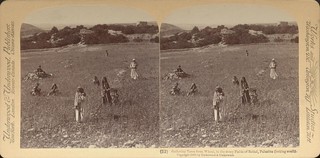Matthew 13:24-43, The Parable of the Wheat and the Tares

Before Jesus came into the world and began His ministry, there was almost unanimous Jewish expectations of the Messiah who would come on the scene in Israel and start the Kingdom of God by restoring Israel to its previous glory experienced during the time of King David and then Solomon. The Messiah would end their subjugation to the Gentiles, end their poverty and mistreatment, and bring in justice, peace, and prosperity. There were many reasons why they did not recognize or accept Jesus as that Messiah. The leaders saw Him as a threat to their power, wealth, and prestige. But most did not understand Him because they expected a political/military deliverer. Jesus did not come with an army to enforce His will, and He did not use His power as God to enforce the Kingdom. Jesus’ weapon was love. He came as a suffering servant who sacrificed Himself out of love. The world has no concept of this weapon of love.
Even His closest disciples were confused because they expected Him to immediately set up the Kingdom of God, restoring Israel, and ending all the evil and unbelief in the world. How could Jesus be the Messiah who came to usher in the Kingdom, yet evil and unbelief continued? It seemed like a contradiction that the Kingdom had come in Jesus Christ, but everything was still messed up. Why does the Kingdom not result in separating true believers from the hypocrites, fakes, and pretenders? Jesus’ audience was ready for that separation, as are we today in the Church. All Christians want the weeding out of evil and evildoers. When will evil be corrected and justice prevail? When will true righteousness actually come to planet earth? The parable of The Wheat and the Tares was given to answer these questions. The parable was presented to the public which could not make heads or tails out of it, but then the interpretation was given to His disciples in private.
What is the Kingdom of God Like?
According to Matt. 13:24-30, what is the Kingdom like? First of all the Kingdom is growing. Seed is being sown that takes root and grows. The sower is Jesus, the “good seed” is believers whose lives have been changed and they are growing in Christ. Eventually this seed will be mature and then be harvested. Now the Kingdom is represented by the reign and rule of Christ in their hearts, but it will be fully realized at the harvest. Jesus is the sower of good seed which is growing in the kingdom. The “field” is the world, and Jesus is growing His Kingdom by saving and growing disciples throughout the world. He is using the church (all believers are in the universal church) to save sinners and then disciple them.
Secondly, the Kingdom of God is growing but there is aggressive opposition. The enemy is sneaky and stealthily comes in the night to plant “tares” among the good seed to ruin the field. Tares are a type of rye grass that can grow with the wheat and looks exactly like it until the wheat finally matures and the seeds appear just before the harvest. Jesus’ audience would not be surprised at this since in the first century competitors would often sneak into an enemy’s field and plant tares to ruin his crop. There was a Roman law passed against this, but the perpetrators were rarely caught. In this parable the enemy is the adversary of God who is secretly behind the enemies of the church. How serious is God’s adversary? 1 Peter 5:8 says “your adversary the devil prowls around like a roaring lion seeking someone to devour.” Eph.6:11-12 says “stand firm against the schemes of the devil. For our struggle is not against flesh and blood, but against…the spiritual forces of wickedness”. The adversary dwells in the invisible realm, but his followers, the tares, are visible and oppose the church. How can you tell for sure who are the wheat and who are the tares? Only by looking inside the plant can you see the tiny grains inside it, but only God can see inside, therefore we won’t know for sure until the harvest. During this church age, the field belongs to the sower (God), but it is being encroached on by the enemy.
Thirdly, the Kingdom is growing even though it is an imperfect mixture of wheat and tares. Initially, the wheat and tares appear to be the same, but eventually when they mature the difference will be obvious. We all know that there are “tares” in the church disguised as good and holy people, just like “the devil masquerades as an angel of light and his followers disguise themselves” as good people (2 Cor.11:14-15).They may give believable professions of faith, but eventually their fruit will reveal them. Right now we are incapable of judging them because only God can see hearts. Some people we don’t like are still believers, and the ones we prefer may be tares. Will the presence of tares prevent the church’s progress? It may damage it but the Kingdom will still progress. The church moves forward in an imperfect state. Just look at church history with all its apostasy, cults, Crusades, Inquisitions, etc. Outsiders may look at the church’s imperfection and discredit the whole movement. The common question is “What about the hypocrites in the church?” Nevertheless, you shouldn’t judge Jesus by the tares.
We in the church are like the servants of the landowner in Matt.13:27-29, in that we want to have a pure and perfect church, but the church will never be pure until Jesus comes back. By trying to judge and extract the tares we might destroy the church.
The Coexistence of Good and Evil in this Present Age
In Matt.13:30, the landowner (God) allows the wheat and the tares to exist together until “the harvest”, meaning the return of Christ and the judgment at the end of the age. Now, the church is progressing towards its goal in spite of aggressive opposition from within and without. This parable explains why there is evil in the world even though Christ is offering the Kingdom to all. God is allowing good and evil to coexist in order to give people a choice, but in the end, the harvest will destroy the enemy and the weeds, but salvage the wheat. Therefore there are two stages to the Kingdom, a period of growth to maturity, followed by a decisive intervention at the harvest. In between these two events the wheat and the tares will coexist uncomfortably together. Jesus’ role is to sow the good seed as He said, “I am the way, the truth, and the life, no one comes to the Father but through Me.” (Jn.14:6) It is Jesus’ Kingdom and only Jesus can bring people in.
Matt. 13:36-43–Sowing, Growing, and Mowing
Later, Jesus went into the house to get away from the crowd. It is interesting that only His closest disciples came to Him for an interpretation of the Parable of the Wheat and the Tares. Before this in v.35, the author gives an explanation of why Jesus was teaching in cryptic parables. He quoted Psalm 78 which says that the Messiah would teach in parables to explain spiritual mysteries that the world cannot understand. Jesus would explain these spiritual mysteries to believers seeking the truth, but the “multitudes” would not be able to get it. Therefore, Jesus was fulfilling prophecy about the Messiah, but also explaining spiritual mysteries by telling worldly stories that they understood. In His explanation He told them the sower represented Him, the field is the world, the good seed is the sons of the kingdom, and the tares are the sons of the evil one. The adversary of God has sown His followers into the churches as well as the whole world. These tares have the external appearance of the good seed, but in time they will be proven to be tares. Naturally the good seed wants to root out what is evil, but only God knows which is which. God has determined that good and evil will coexist until the Day of Judgment which is the harvest in the parable. At that time, the angels of God will appear with Christ and He will send His angels to separate the wheat from the tares. Just like a farmer bundles and burns the weeds, the sons of the evil one will be cast into the furnace of fire, while the sons of the Kingdom will “shine forth as the sun in the Kingdom of God”.
Why Does God Allow Evil to Coexist with Good?
Originally, the creation was perfect and there was no evil, but when God created man, He created us in His “image” which set us apart from the rest of creation to have a loving intimate relationship with God and to serve Him and glorify Him. But part of love is free will, and you can’t force someone to love you, therefore God created us with a free will. By creating us with a free will, God made evil a possibility. If man disobeyed God and rebelled against God, man was told that “you shall surely die”. Death meant more than just physical death, it also meant separation from God. When mankind rebelled against God and began seeking his independence from God, man caused his very existence to be at odds with Gods purpose in creating man. Knowing that this was self destructive for mankind, God acted to rig the world so that man could not find meaning, purpose, or fulfillment apart from God. Paul says it well in Romans 8:20-24, “the creation was subjected to futility, not of its own will, but because God subjected it in hope”. God allows the existence of evil, which came into the world because of mans rebellion, because God desires for all to come back to Him and be redeemed from their futile state of rebellion and be restored to their original state of eternal life in relationship to Him.
God sent His Son into the world for that very purpose to redeem mankind. Jesus offered the Kingdom of God to all who would receive it. The Kingdom of God is the rightful reign and rule of God over His creation. In this sense, all people who receive Jesus as their Lord and Savior are allowing God to reign and rule in their hearts, and they are considered citizens of the Kingdom of God. They will not fully experience the end of evil and the full righteousness of God until Christ comes back. Now, they must live as the “good seed” in the parable that coexists with the bad seed, but at God’s appointed time He will send Christ back with all His angels to put an end to evil and fully set up the Kingdom. Why the delay? 2 Peter 3:9 explains it well, “The Lord is not slow about His promise, but is patient toward you, not wishing any to perish but for all to come to repentance”. Therefore The Lord is allowing good and evil to coexist until all who will come, do come to repentance and are then considered the “good seed”. Then the “harvest” of Matt. 13:30 will occur, and will result in the end of evil, and the Kingdom of God will be fully realized just as Revelation 11:15 says “The kingdom of the world has become the Kingdom of our Lord and of His Christ, and He will reign forever and ever”. Amen
CHARLIE TAYLOR
Lesson 2 Questions: Spring 2014 Lesson 2
Lesson 2 Podcast:
Podcast: Play in new window | Download


